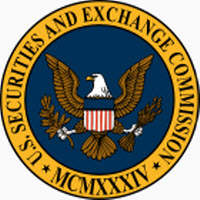90 percent of electronic companies not ready for SEC 'blood minerals' rules


Back in August, the U.S. Securities and Exchange Commission (SEC) voted to pass rules that required companies to disclose the purchase of four minerals from the war-torn Democratic Republic of Congo. But with less than two years to go until the rules kick in, research firm IHS claims that most of the industry is unprepared.
Conflict minerals -- specifically tin, tantalum, tungsten and gold -- are defined as those mined in locales of armed conflict and human rights abuses. As the demand for consumer electronics grows, so does the demand for these minerals, which in turn increases the likelihood that they will originate from areas of the world where wars rage on.
For example, IHS estimates that about $0.15 worth of tantalum was contained in every smartphone shipped in 2010. In 2012, this would amount to $93 million worth of tantalum in smartphones alone.
The new rules by the SEC will now require all publicly trading companies in the U.S. -- some 6,000 in total -- to tell customers where the minerals originated. The rules do not prohibit companies from using blood minerals, though companies have until May 2014 to make their first minerals disclosure. On top of that, companies will simply be able to disclose for two years that they cannot determine if the minerals they use are conflict minerals or not.
The SEC rules are estimated to directly impact 5,994 companies that file reports to the SEC, and hundreds of thousands of their suppliers.
"Large electronic original equipment manufacturers (OEM) use tens of thousands of parts that must be examined to determine their conflict mineral content," said Rory King, director, supply chain product marketing at IHS. "The next 19 months really is not very much time to communicate, collect, analyze, and prepare information on mineral sources across a globally diverse, multi-tier value chain, in order to determine conflict minerals content and develop reports that comply with the SEC rule."
The rules could have an effect on prices.
"The Reduction of Hazardous Substances (ROHS) legislation in Europe produced a series of unintended consequences, including shortages, price increases, and large-scale obsolescence of components," King said. "Similar unexpected events could arise from the SEC conflict minerals rule, especially as a pooling of two supply chains materialize where some companies and their supply chains move away from minerals sourced from illegal operations in the DRC and other global supply chains do not."
The SEC has estimated that the compliance costs could total as much as $5 billion initially, but the costs will fall to between $200 to $600 million annually as compliance procedures are put in place.
Some companies have already taken it upon themselves to eliminate conflict minerals from the market or their own supply chains. Intel is committed to "conflict-free" processors by 2013, while Apple was the first company to draw up a list of all 175 of its supply chain suppliers, and require that they are audited where possible.
Other companies such as General Electric, HP, and Motorola have joined forces to create the Public-Private Alliance for Responsible Minerals Trade with the aim of helping those in the Congo and other governments in the region to break ties with the conflict mineral trade.